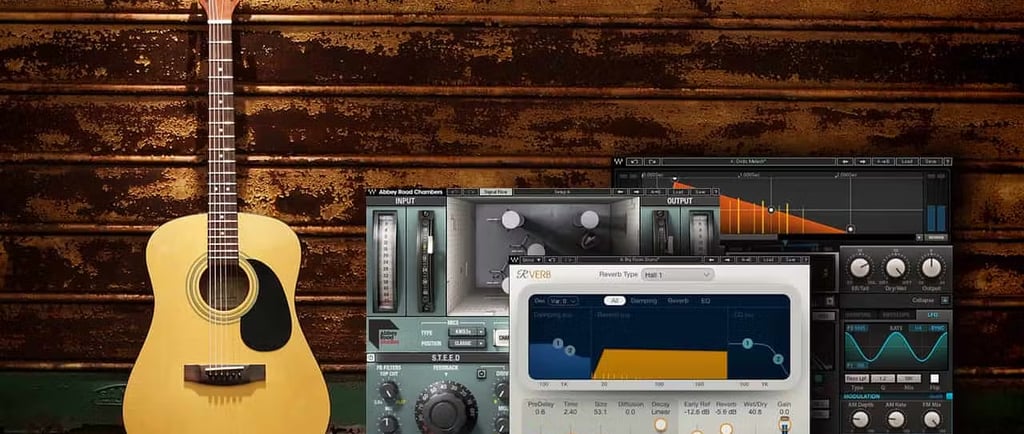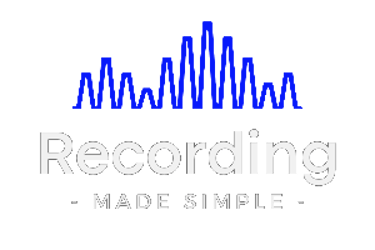Mastering Reverb for Vocals and Guitar: Tips for Creating Depth and Space
Blog post description.


Have you ever wondered how professional recordings achieve that rich, full sound that feels alive and immersive? One of the key tools behind this magic is reverb. Whether you're a singer or an acoustic guitarist, understanding how to use reverb effectively can take your recordings from flat to fabulous. In this post, we'll explore the art of reverb, how to balance it for clarity, and practical tips to enhance your music production. Let's dive in!
What Is Reverb and Why Does It Matter?
Reverb is the natural echo you hear in a space, like a hall or a church. In music production, reverb is used to add depth and dimension, making your vocals or instruments sound larger and more dynamic. Without it, recordings can feel dry and lifeless. However, too much reverb can make your mix muddy and unclear. The trick is to find the sweet spot where everything sounds polished yet natural.
To illustrate, imagine a vocal recording: when played "dry" (with no effects), it feels raw and upfront. But adding the right amount of reverb can create a sense of space, making the vocal feel like it's coming from a grand stage or a cozy room, depending on the setting. As one expert puts it, "A little reverb can go a long way at making your recording sound professional."
Dry vs. Wet: Hearing the Difference
Let’s break down the difference between a dry and wet sound. A dry sound has no effects applied, while a wet sound includes reverb or other effects. Here’s an example using vocals:
Dry: "It was complicated. What can I say? You broke my heart, but you're on my mind every day."
Wet: The same passage with reverb applied, adding depth and emotion to the sound.
When listening to both versions back-to-back, you’ll notice how reverb transforms the vocal, making it more engaging and alive. But remember, the goal is balance. Too much reverb can overwhelm the mix, while too little might leave it feeling flat.
Reverb on Acoustic Guitar: Less Is More
Reverb isn’t just for vocals—it works wonders on acoustic guitar too! A dry guitar recording might sound plain, but adding reverb can bring warmth and resonance. For instance, a standard plate reverb, such as the classic Pro Tools plugin, can create a large, open sound that complements the guitar’s natural tone.
Here are some tips for using reverb on acoustic guitar:
Start with a small amount of reverb to avoid muddying the sound.
If your guitar was recorded in a large room, it likely already has some natural reverb. Be mindful not to overdo it.
When mixing, ensure the reverb doesn’t overpower other elements in the track.
Blending Vocals and Guitar with Reverb
When combining vocals and guitar, achieving a cohesive sound is crucial. The key is to use the same reverb effect for both but adjust the levels differently. For example, you might set the vocal reverb slightly higher than the guitar reverb to ensure the vocal remains the focal point.
Here’s a quick step-by-step guide:
Apply the same reverb plugin to both the vocal and guitar tracks.
Adjust the vocal reverb to create a sense of space without losing clarity.
Lower the guitar reverb slightly to keep it in the background while maintaining its warmth.
This method ensures your mix feels unified while allowing each element to shine. As the expert explains, "Blending them a little differently will help you get more clarity in your mix."
Finding Your Reverb Sweet Spot
When it comes to reverb, personal preference plays a big role. Some musicians prefer a lot of reverb for a dreamy, ethereal effect. Others opt for a subtle touch, where the reverb is barely noticeable but adds a sense of space. The best way to find your sweet spot is to experiment.
Here are some final tips:
Start with a basic plate reverb and adjust the size and decay settings to suit your style.
Listen to your mix with and without reverb to ensure it enhances rather than detracts from the overall sound.
Use reverb strategically to create emotional impact, such as pushing certain elements back in the mix.
Conclusion
Reverb is an essential tool for adding depth, space, and professionalism to your recordings. From enhancing vocals to creating warmth in acoustic guitar tracks, a well-balanced reverb can elevate your mix to new heights. Remember, less is often more—experiment with different settings and find what works best for your unique sound.
Now it’s your turn! How do you use reverb in your recordings? Do you have a favorite plugin or go-to settings? Share your insights in the comments below. And don’t forget to subscribe for more music production tips and tricks. Let’s make your recordings shine! 🌟
